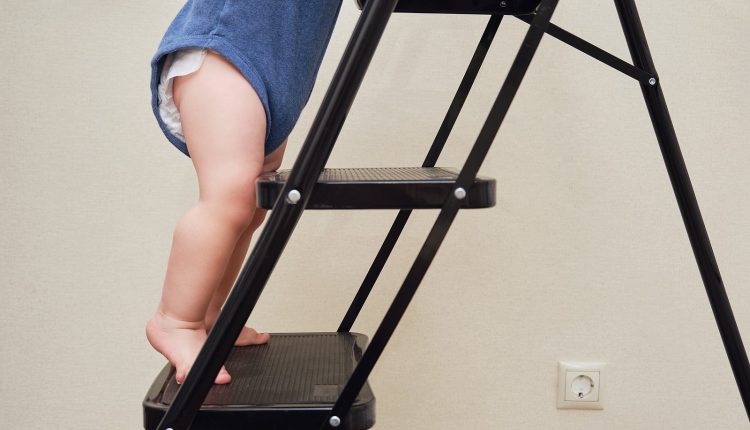
Toddler Home Safety: children at home, some information for parents
Injuries are the leading cause of death of children younger than four years old in the United States. However, most of these injuries can be prevented by taking some simple precautions
Parents must take steps to protect their children from injury, such as ensuring that they are always supervised when playing and keeping dangerous objects and areas out of their reach.
It’s also important to teach your children about danger and how to stay safe.
Talking to them about traffic safety, Stranger Danger, and not running near water can help keep them safe.
Here are some precautions that can help keep your children safe and reduce the risk of injury.
Child-proofing
First, it’s important to childproof your home.
This means keeping potentially harmful items, such as cleaning supplies and medications, out of reach.
Install guards on windows and staircases to prevent falls.
Ensure electrical outlets have covers and any sharp objects or fragile items are kept away from your toddler’s reach.
Children at home: Safety & First Aid
Having the correct safety equipment in an emergency is equally critical.
Install smoke and carbon monoxide detectors on each level of your home, and make sure they are tested regularly.
Prepare a fire escape plan and rehearse it with your family regularly.
It’s also a good idea to keep a first-aid kit nearby in case of an accident or injury.
Living Room Safety
As your child starts to explore their surroundings and walk well, it’s important to remember that they may not understand what is dangerous.
To prevent serious falls:
- Lock the doors to any hazardous areas and remove sharp-edged furniture from the room your child plays and sleeps in.
- Install operable window guards above the first floor and use gates on stairways.
- Call your doctor if your child falls or does not act normally after a fall.
Kitchen Safety
Spilling hot liquids, grease, or hot meals on your child will result in severe burns.
While cooking, dining, or otherwise when you’re unable to offer your child your complete attention, a playpen, crib, or stationary activity center is a safer location for them.
It is essential to keep your toddler away from the kitchen while cooking.
Please keep your child away from rooms with hot things, or place a barrier around them.
Keep children away from a gas fireplace when in use or an hour after that
Glass doors can become incredibly hot and inflict severe burns.
Children enjoy playing in water but should never be left alone near it
Even a few inches of water can harm a baby, who can easily drown.
It’s critical to take precautions to keep them safe around water.
Always empty buckets and close restroom doors after using them.
If you have a swimming pool, enclose it with fencing and install self-latching gates.
Eating Safety
Children constantly explore their environments and put everything in their mouths, no matter how it tastes.
As a parent, you must always use safety caps on medicines and toxic household products.
If these items are not stored safely, your child could easily open them.
Keep all products in their original containers and use them precisely as directed.
If you have any unused medicine, dispose of it safely.
(HealthyChildren.org)
Although it’s essential to be attentive and take precautions for your toddler’s safety, it’s also critical that you encourage their natural curiosity and movement.
Free playtime is crucial for their development in coordination, strength, and motor skills – so let them explore!
If you provide a safe environment with simple rules, your toddler can have fun while learning how to navigate the world around them.
Every room in the house necessitates specific attention.
Here are room-by-room checklists to assist parents and caregivers in protecting their homes:
https://kidshealth.org/en/parents/household-checklist.html
It is very important to know what to do if your child is injured, and in the articles below there is a lot of specific guidance for individual cases.
References
Healthy Children. “Safety for Your Child: 1 to 2 Years.” HealthyChildren.org, www.healthychildren.org/English/ages-stages/toddler/Pages/Safety-for-Your-Child-1-to-2-Years.aspx.
SOM – State of Michigan. “Toddler Health & Safety.” SOM – State of Michigan, www.michigan.gov/mikidsmatter/parents/toddler/health.
Read Also
Emergency Live Even More…Live: Download The New Free App Of Your Newspaper For IOS And Android
What Should Be In A Paediatric First Aid Kit
Chemical Burns: First Aid Treatment And Prevention Tips
Heimlich Maneuver: Find Out What It Is And How To Do It
Electrical Burn: First Aid Treatment And Prevention Tips
4 Safety Tips To Prevent Electrocution In The Workplace
Neonatal/Pediatric Endotracheal Suctioning: General Characteristics Of The Procedure
Food Poisoning: Know The Symptoms And First Aid Treatment
Electrical Injuries: How To Assess Them, What To Do
Emergency Burn Treatment: Rescuing A Burn Patient
First Aid For Scalding: How To Treat Hot Water Burn Injury
Electric Shock First Aid And Treatment
First Aid, Identifyng A Severe Burn
Identifying And Treating Carbon Monoxide Poisoning



